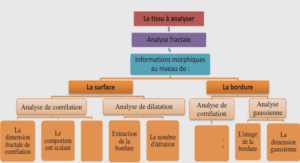Both Susanna Moodie and Elizabeth Gaskell were beset with concern about their own and humanity’s, place in relation to the nonhuman and the concept of place attachment as an untenable ideal. Nevertheless, despite the relatively extensive critical interest in their work, there has not, so far, been any kind of extended ecocritical analysis of either author. In general, in criticism, the nonhuman is largely a backdrop and most literary criticism, even after over fifteen years of ecocriticism, is still predicated on an unquestioned concept of nature, if not “Nature.” Asking ecocritically-based questions of Moodie and Gaskell’s work should provide a new perception of women’s writing and its relationship to the nonhuman. In this chapter, I will review the critical work on Susanna Moodie and Elizabeth Gaskell that is relevant to this study as well as explain how my theoretical framework is constructed.
Susanna Moodie
“No single view encompasses what Susanna Moodie has to say and what she represents. Rather, she stands as a persistent and challenging enigma for readers old and new”
–Michael Peterman, “Introduction” to Roughing It in the Bush .
In the aftermath of the massive urbanization of the Industrial Revolution, the shift in relationships between human and nonhuman were very worrisome to middle-class Victorians, who were concerned about the separation between humankind and nature but unable to overcome it in a way that was productive (Shires). Like Moodie, the literary culture seemed to revel in what Lawrence Buell calls a “sentimental environmental determinism” (Future 66) and continue to celebrate the ideal English village and its bucolic surroundings despite the far-reaching changes in English social structure.
Susanna Moodie’s writing about Canada is fraught with moments in which she both laments the loss of England and embraces, albeit self-consciously, her new country. Yet, despite her position as a central figure in Canadian literature, her words are representative of the Victorians in general, particularly the early Victorians. This duality has meant her critical status is variable; often, in recent criticism, she is considered in passing, often as a figure to be knocked down or debunked. Roy MacGregor, for example, in his 2013 introduction to Thomas Osborne’s memoir, The Reluctant Pioneer, refers to Susanna Moodie’s Roughing It in the Bush as “spiteful”, and to Moodie as a ‘reporter’. Her desire to prevent the English middle classes from coming to Canada, MacGregor says, was “spiteful”, and that She had hoped to see British culture transplanted to this vast winter outpost and spent a lifetime trying to set herself and hapless husband, John, up as gentry. She ended up hating the country and the savage side of nature as she found it. (11)
The introduction goes on to reject Northrop Frye’s garrison mentality as the conception of someone who was “terrified of nature” (11). Having disposed of two major figures in the Canadian canon as anti-nature, MacGregor is now free to hold his subject, Thomas Osborne, up as someone who faced his fears and did not dread nature.
While MacGregor’s introduction embodies many things that have been problematic about certain aspects of ecocriticism (masculinism, ableism, a personal link to the landscape replacing a tenable theoretical structure), and is therefore perhaps not the most reliable source, this kind of attitude towards Moodie is fairly common. Even in the early years of her “reclamation”—the re-evaluation of her work by critics, and her subsequent analysis by feminist and postcolonial scholars—there is relatively little scholarly work, particularly book-length, devoted exclusively to her. Where such monographs exist, they focus almost exclusively on her autobiographical work. Only three literary monographs about Moodie have been written since 1977: Carol Shields’ Voice and Vision (1977), a thematic analysis of Moodie’s work; The Work of Words (1996), John Thurston’s New Historicist analysis of Moodie’s body of work; and This Great Epoch of Our Lives: Susanna Moodie’s Roughing It in the Bush (1996), Michael Peterman’s in-depth analysis of the work’s reception, structure, and intent. Peterman has written extensively about Moodie, his most recent being a critical edition of Roughing It in the Bush in 2007.
It is true that much of Moodie’s writing, though energetic, is formulaic, wordy, and deeply sentimental. However, the generalized lack of interest in her work is not apparently caused by this; according to Carol Shields, “Mrs. Moodie’s real value lies neither in the quality of her writing nor in her position as national microcosm; it rests instead in her historic perspective and almost singular viewpoint” (Shields 2). This perspective is echoed over most Moodie criticism in the last forty-five years (Peterman, “Susanna Moodie”; Thurston). Though evaluative criticism is no longer done, most criticism of Susanna Moodie does involve a certain amount of value judgement, partly because of her uneasy role in the development of a Canadian ecological consciousness.
Canadian ecocriticism, therefore, is still coming to terms with her work, despite the “obviously fertile ground for ecocritical study” (Bentley). Most of the existing criticism is thematic, or deals with the nonhuman as peripheral in the course of analysis from a feminist, post-structuralist, or New Historicist point of view. In general, the majority of criticism is focused on place, identity, and nature, although the post-Atwood criticism that addresses nature is mainly either thematic or feminist-oriented. There have also been numerous bibliographical studies, especially in the late nineteen eighties and early nineties but, as yet, no ecocritical work. This is probably at least in part because the thematic treatment of “Nature” in her work has reduced interest in analysis using an ecocriticismspecific theory.
Of course, the paradox of Moodie’s inclusion, and indeed, foundational position, in the new Canadian canon of the nineteen-sixties is that she was still not actually considered Canadian, but rather a dual, deeply conflicted citizen of England and Canada. During her lifetime, Moodie did identify as British, and, throughout the nineteenth century, was viewed, discussed, and criticized as such. It is only later, in the mid-twentieth century, during a Canadian quest for identity that surrounded the centenary and that included the emergence of Canadian literature as a literature in its own right, that Moodie was claimed as Canadian. Clearly representative of Canada’s colonial past (and, arguably, colonial present in the sense that Canada, though developing a sense of nationhood, was, and technically still is, English), her writing was extensively analyzed and her voice reinterpreted many times by major Canadian writers such as Robertson Davies, Carol Shields, Elizabeth Hopkins, and, of course, Margaret Atwood (Peterman 1983 74).
INTRODUCTION |






